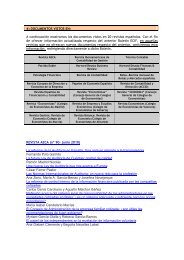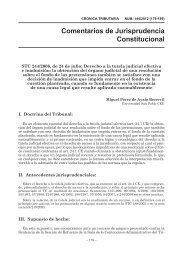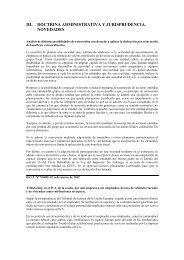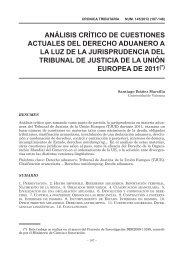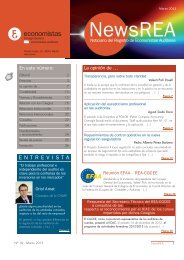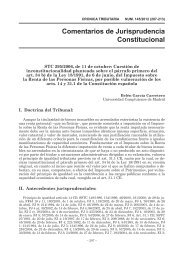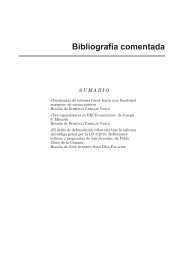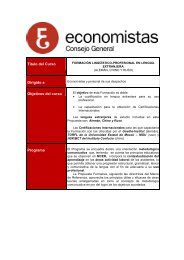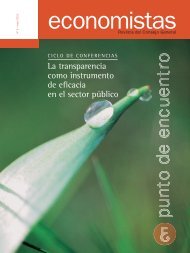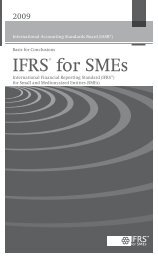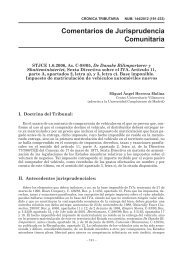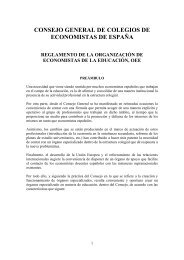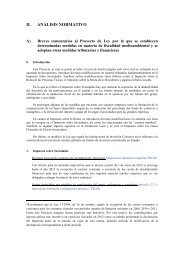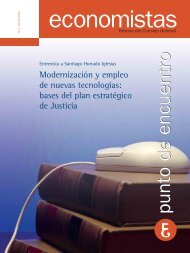IFRS for SMEs Implementation Guidance 2009.fm
IFRS for SMEs Implementation Guidance 2009.fm
IFRS for SMEs Implementation Guidance 2009.fm
You also want an ePaper? Increase the reach of your titles
YUMPU automatically turns print PDFs into web optimized ePapers that Google loves.
<strong>IFRS</strong> FOR SMES — JULY 2009<br />
Deferred tax is recognised on differences between the carrying amounts of assets and<br />
liabilities in the financial statements and their corresponding tax bases (known as<br />
temporary differences). Deferred tax liabilities are recognised <strong>for</strong> all temporary<br />
differences that are expected to increase taxable profit in the future. Deferred tax assets<br />
are recognised <strong>for</strong> all temporary differences that are expected to reduce taxable profit in<br />
the future, and any unused tax losses or unused tax credits. Deferred tax assets are<br />
measured at the highest amount that, on the basis of current or estimated future taxable<br />
profit, is more likely than not to be recovered.<br />
The net carrying amount of deferred tax assets is reviewed at each reporting date and is<br />
adjusted to reflect the current assessment of future taxable profits. Any adjustments are<br />
recognised in profit or loss.<br />
Deferred tax is calculated at the tax rates that are expected to apply to the taxable profit<br />
(tax loss) of the periods in which it expects the deferred tax asset to be realised or the<br />
deferred tax liability to be settled, on the basis of tax rates that have been enacted or<br />
substantively enacted by the end of the reporting period.<br />
Property, plant and equipment<br />
Items of property, plant and equipment are measured at cost less accumulated<br />
depreciation and any accumulated impairment losses.<br />
Depreciation is charged so as to allocate the cost of assets less their residual values over<br />
their estimated useful lives, using the straight-line method. The following annual rates are<br />
used <strong>for</strong> the depreciation of property, plant and equipment:<br />
Buildings<br />
Fixtures and equipment<br />
2 per cent<br />
10–30 per cent<br />
If there is an indication that there has been a significant change in depreciation rate,<br />
useful life or residual value of an asset, the depreciation of that asset is revised<br />
prospectively to reflect the new expectations.<br />
Intangible assets<br />
Intangible assets are purchased computer software that is stated at cost less accumulated<br />
depreciation and any accumulated impairment losses. It is amortised over its estimated<br />
life of five years using the straight-line method. If there is an indication that there has<br />
been a significant change in amortisation rate, useful life or residual value of an intangible<br />
asset, the amortisation is revised prospectively to reflect the new expectations.<br />
Impairment of assets<br />
At each reporting date, property, plant and equipment, intangible assets, and investments<br />
in associates are reviewed to determine whether there is any indication that those assets<br />
have suffered an impairment loss. If there is an indication of possible impairment, the<br />
recoverable amount of any affected asset (or group of related assets) is estimated and<br />
compared with its carrying amount. If estimated recoverable amount is lower, the<br />
carrying amount is reduced to its estimated recoverable amount, and an impairment loss<br />
is recognised immediately in profit or loss.<br />
12<br />
©<br />
IASCF



